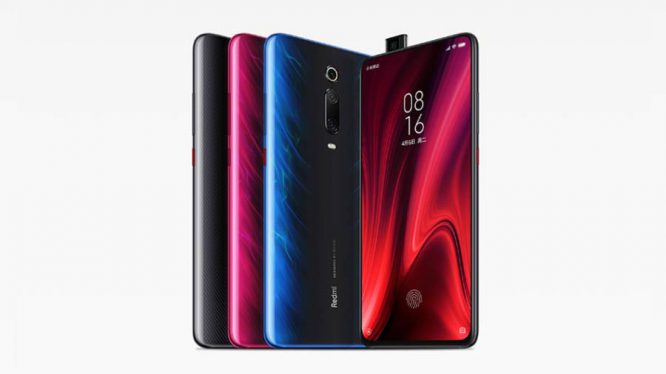
Pocophone F1 has aged well in its first foray into the budget-flagship category. That said, its fanbase is strongly optimistic about a potential successor. However, we haven’t heard anything about it, not even the words “Poco F2”. Instead, we were greeted by the Redmi K20 Pro. Coming from the same parent company, Xiaomi, people around the tech world is calling it the Poco F1 successor. If that’s the case, is it a worthy upgrade?
READ: Redmi K20 Pro gaming to launch with Snapdragon 855, 48MP camera, P19k price

Advantages of Redmi K20 Pro
Advantages of Pocophone F1

Perhaps, the biggest difference is build quality. The Redmi K20 Pro carries a more premium look, thanks to glass and metal build construction. It only gets even better with the use of a pop-up camera to pave the way for a full-screen display.
Speaking of, there’s also a significant difference in display quality. The use of Super AMOLED panel by the K20 Pro over an IPS LCD, means better contrast ratio, saturated colors, and deeper black color. Furthermore, Xiaomi is introducing here HDR support for better picture quality when watching HDR-supported content.
While there’s already a 7nm-based Snapdragon 855 on the K20 Pro, the SD 845 of the Poco F1 is every bit as capable as its predecessor. And with both running on MIUI 10, the experience is basically identical. One thing to take note of is the presence of a microSD slot on the Poco phone, unlike its competition.
READ: Redmi K20 vs Realme X Specs Comparison – Which Affordable Mid-Range Phone Should You Get?
In the year of triple cameras, the K20 Pro also adopts this feature — sporting a 48MP f1.8 wide + 8MP f2.4 + 13MP f2.4 ultrawide. It’s a huge upgrade over the Poco F1 if we’re talking about camera capability.
It’s a different story, however, for the selfie cameras. Both are using 20MP sensors, with Poco F1 having a wider f2.0 aperture.
With both budget flagship phones using 4000mAH batteries, the difference lies in how fast they top up. Thanks to Quick Charge 4+ on the K20 Pro, it can deliver up to 27W via its wall charger.
Pocophone F1 had a starting price of P16,990 (6GB/64GB) while the Redmi K20 Pro starts at $380USD in China or roughly P19k(6GB/64GB) without taxes in the Philippines.
Xiaomi truly delivered a knockout punch with its Redmi K20 Pro. For a small price increase, you’re getting a full-blown, modern flagship smartphone built for 2019. Although the Poco F1 is still a capable device, it’s hard not to be impressed by its so-called successor.
READ: Redmi K20 Pro is the Pocophone killer, Sold 200,000 units in first sale
| Specs | Redmi K20 Pro | Pocophone F1 |
| Display | 6.39-inch Full FHD+ Super AMOLED screen, Corning Gorilla Glass 5, fullscreen display | 6.18-inch IPS LCD FHD+, Corning Gorilla Glass 3, notch |
| Dimensions | 156.7 x 74.3 x 8.8 mm, 191g | 155.5 x 75.3 x 8.8 mm , 182g |
| Chipset | Qualcomm SDM855 Snapdragon 855 (7 nm) | Qualcomm SDM845 Snapdragon 845 (10 nm) |
| GPU | Adreno 640 | Adreno 630 |
| Memory | 256 GB, 8 GB RAM or 128 GB, 6/8 GB RAM or 64 GB, 6 GB RAM | 256 GB, 8 GB RAM or 64/128 GB, 6 GB RAM + microSD slot of up to 256GB |
| Main Camera | 48 MP, f/1.8, 26mm (wide), 1/2″, 0.8µm, PDAF 8 MP, f/2.4, 53mm (telephoto), 1/4″, 1.12µm, PDAF, 2x optical zoom 13 MP, f/2.4, 12mm (ultrawide), 1/3″, 1.12µm |
12 MP, f/1.9, 1/2.55″, 1.4µm, dual pixel PDAF+
5 MP, f/2.0, 1.12µm, depth sensor |
| Front Camera | Motorized pop-up 20 MP, f/2.2, 0.8µm | 20 MP, f/2.0, 0.9µm |
| Connectivity | Wi-Fi 802.11 ac, hotspot, BT 5.0, LE, aptxHD, USB Type-C, headphone jack | Wi-Fi 802.11 ac, hotspot, BT 5.0, LE, aptxHD, USB Type-C, headphone jack |
| Battery | Non-removable Li-Ion 4000mAh battery (27W fast charging) | Non-removable Li-Ion 4000mAh battery (18W fast charging) |
| OS | Android 9.0 (Pie) with MIUI 10 | Android 9.0 (Pie) with MIUI 10-Poco Launcher |
| Official Price | ~P19k before taxes (6GB/64GB) | P16,990 |

ManilaShaker is a tech media producing insightful and helpful content for our local and growing international audience. Our goal is to create a premier Philippine digital consumer electronics resource that provides the most objective reviews and comparisons globally.